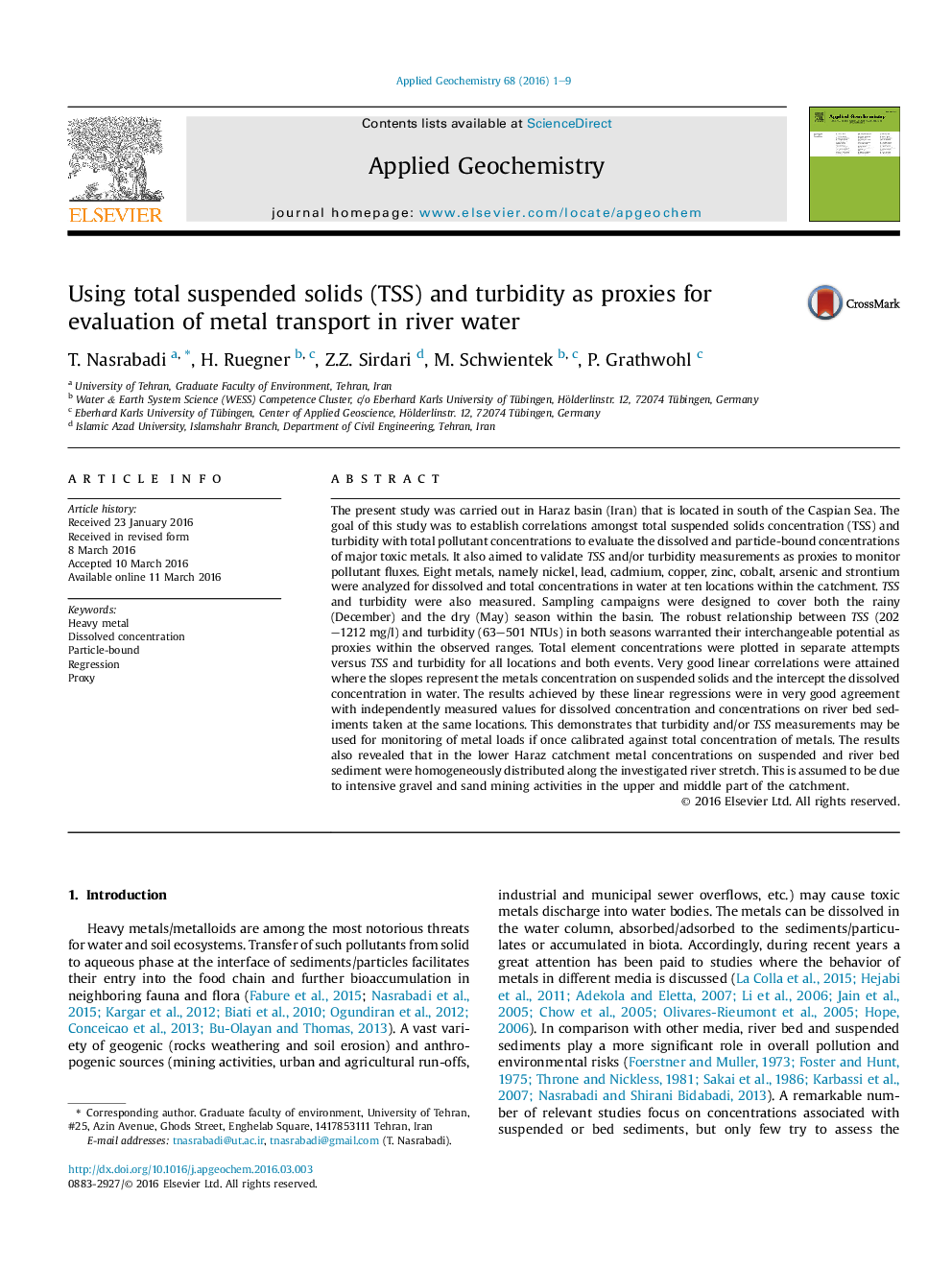| Article ID | Journal | Published Year | Pages | File Type |
|---|---|---|---|---|
| 4435566 | Applied Geochemistry | 2016 | 9 Pages |
•Turbidity is evaluated as a feasible proxy to predict metals concentration in rivers.•Robust relationships are achieved between TSS, turbidity and metal concentrations.•Lab-measured and regression-based data are in a good agreement.
The present study was carried out in Haraz basin (Iran) that is located in south of the Caspian Sea. The goal of this study was to establish correlations amongst total suspended solids concentration (TSS) and turbidity with total pollutant concentrations to evaluate the dissolved and particle-bound concentrations of major toxic metals. It also aimed to validate TSS and/or turbidity measurements as proxies to monitor pollutant fluxes. Eight metals, namely nickel, lead, cadmium, copper, zinc, cobalt, arsenic and strontium were analyzed for dissolved and total concentrations in water at ten locations within the catchment. TSS and turbidity were also measured. Sampling campaigns were designed to cover both the rainy (December) and the dry (May) season within the basin. The robust relationship between TSS (202–1212 mg/l) and turbidity (63–501 NTUs) in both seasons warranted their interchangeable potential as proxies within the observed ranges. Total element concentrations were plotted in separate attempts versus TSS and turbidity for all locations and both events. Very good linear correlations were attained where the slopes represent the metals concentration on suspended solids and the intercept the dissolved concentration in water. The results achieved by these linear regressions were in very good agreement with independently measured values for dissolved concentration and concentrations on river bed sediments taken at the same locations. This demonstrates that turbidity and/or TSS measurements may be used for monitoring of metal loads if once calibrated against total concentration of metals. The results also revealed that in the lower Haraz catchment metal concentrations on suspended and river bed sediment were homogeneously distributed along the investigated river stretch. This is assumed to be due to intensive gravel and sand mining activities in the upper and middle part of the catchment.
Graphical abstractFigure optionsDownload full-size imageDownload as PowerPoint slide
